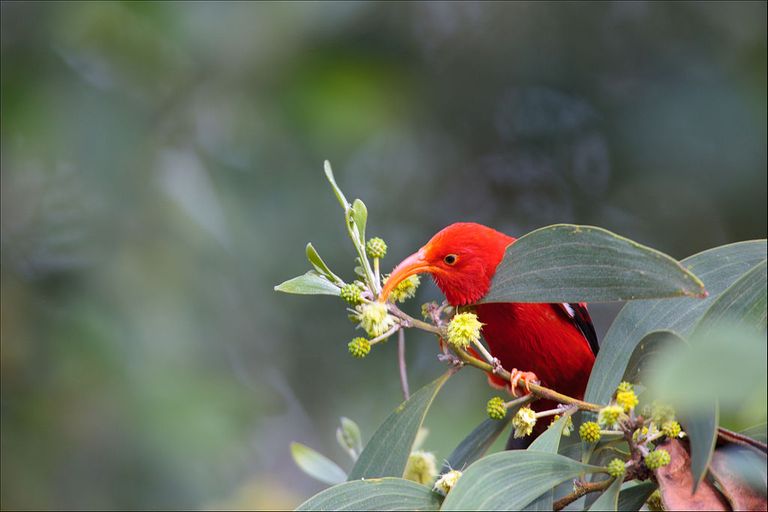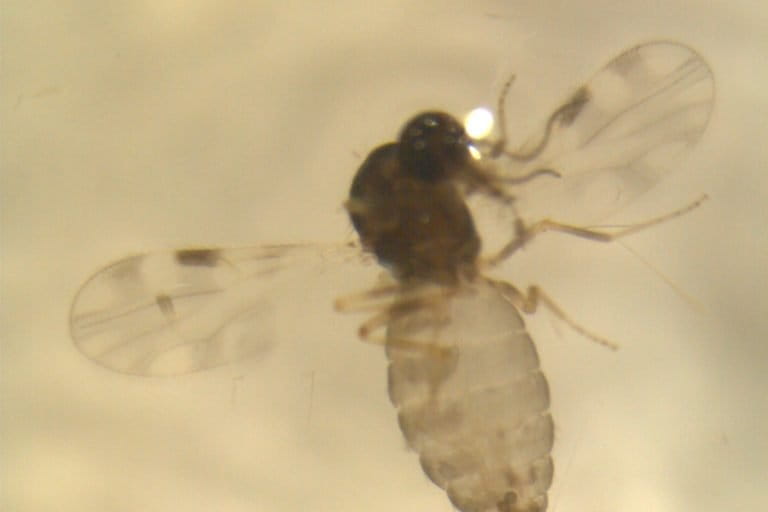- Certain bird species in the Himalayas may be left in the lurch as disease-causing vectors such as mosquitoes expand their range in the mountains in a warmer, wetter world.
- As a model system, tracking avian malaria can inform us about how environmental changes can affect pathogen transmission in general, experts note.
- Avian malaria parasites persist in winters and infections are higher in intensity in the non-breeding season.
Malaria affects millions of people across the globe. It also hurts birds. Researchers are now breaking new ground on avian malaria studies in the Himalayas where bird species are targeted by disease causing vectors like mosquitoes.
And the enormity of malarial parasites pulsing through the blood of small songbirds at higher elevations in the western Himalayas has alarmed researchers.
They say in a new study that certain bird species may be left in the lurch as disease-causing vectors such as mosquitoes expand their range in the mountains in a warmer, wetter world.

As a model system, tracking avian malaria can inform us about how environmental changes can affect pathogen transmission in general, experts note.
Avian malaria is caused by parasites of the genera Plasmodium, Haemoproteus and Leucocytozoon. It is particularly well documented for its devastation of native bird populations on the Hawaiian Islands.
Perching birds (passerines), which include songbirds, are said to be the most susceptible and malaria has been described from over 1,100 avian species distributed all over the world.
According to ecologist and avian disease researcher Farah Ishtiaq who led the study in the western Himalayas, presence of mosquitoes and temperature conditions favour Plasmodium parasite transmission in sites that are at low elevations.
However, the conditions for disease transmission are not good enough at high elevation habitats that are much colder.
“But it will change with rising temperature and range expansion in mosquito vectors which will worsen oxygen stress as well as survival and fitness in wild birds,” Ishtiaq of the Centre for Ecological Sciences, Indian Institute of Science, Bengaluru and lead researcher of the study told Mongabay-India.
She termed it “alarming” as these birds, such as the dark breasted rosefinch, cannot evolve overnight in terms of their immune response and the changes may outpace their adaptability.

The data from the Himalayas are important, according to avian parasitologist Ravinder Sehgal, who was not associated with the study.
They show that birds that are stressed due to low oxygen levels can be particularly affected by blood parasites, because they infect red blood cells (the haemoglobin-containing cells that carry oxygen around the body) and blunt their oxygen carrying capacity.
“So it is not the cold, but also the elevation that is important here. In addition, the data provides a baseline for which we know the prevalence now and will be able to see how things change with a warming climate,” Sehgal, professor, department of biology, San Francisco State University, told Mongabay-India.
“The mosquitoes that transmit malaria to humans are different than those for birds but as a model system, tracking avian malaria, can inform us about how environmental changes can affect pathogen transmission in general,” he said.
Further, each region has a very different suite of bird species.
“The Himalayas have an unusual group of birds that move up and down an elevational gradient, so they have evolved to survive in that environment. From a conservation perspective, scientists are concerned that global warming will allow the spread of insect vectors to higher elevations and the introduction of new insect vectors and new parasites that the birds have not been exposed to earlier,” Sehgal said.
From Hawaii to the Himalayas
Ishtiaq’s work builds on from her research in Hawaii where many endemic birds became extinct due avian malaria.

These Hawaiian birds evolved without blood borne pathogens and so they had no immunity to deal with new parasites that were brought in with introduced birds and accidental mosquito influx.
“Now low elevation habitat in Hawaii harbour introduced birds and mosquito but high elevation habitat are mosquito and parasite free due to thermal gradient. Therefore, native endemic birds are usually found in high elevation malaria free zones,” said Ishtiaq, a Wellcome Trust/DBT India Alliance fellow.
In the Himalayas, birds follow two migration strategies.
Resident birds do not migrate whereas the “elevational migrants” move to low elevation habitats (up to 1500 metres) in winter mainly for foraging prospects. Some species make a shift to the plains as well.
They breed in sites that are at higher elevations (2000 to 4000 metres or even higher) in the summer season (April-May).
Ishtiaq’s study dealt with “elevational migrants” as well as resident species.
In their seasonal switch of locations, these birds face a double whammy: oxygen deficiency and a spike in infection risk.
“Oxygen deficiency hits them when they go up during summer to breed while infection risk is during winter when birds come to lower elevations. They fine-tune their oxygen carrying capacity with change in elevation. Such migrants are at increased risk of infection in lower elevation habitat where parasite diversity is relatively high and conditions are conducive for parasite transmission,” explained Ishtiaq.
By analysing the DNA of parasites belonging to the genera Plasmodium, Haemoproteus and Leucocytozoon in 18 Himalayan bird species, the study delved into the infection status and infection intensity. Plasmodium is transmitted by mosquitoes, Haemoproteus by biting midges and black flies transmit Leucocytozoon.

In addition, the researchers factored in two physiological parameters: haemoglobin and haematocrit (percentage of red blood cells in blood).
The bird blood sampling was conducted in the non-breeding season (January–March) and breeding season (April–May) in Kedarnath Wildlife Division, in Uttarakhand.
Parasites persist in winters
What stumped the researchers was the observation that the parasites persist in winters and infections are higher in intensity in the non-breeding season.
“When I sampled them during the breeding time, I didn’t see any parasite in their blood. In the non-breeding season in the winter when they were in the lower elevation, the intensity of parasites was very, very high which is quite strange and alarming in the sense of what’s happening to the birds,” she said.
This contradicted reports from temperate regions where the intensity of infection was higher in the breeding season when immunity is quite suppressed.
One explanation for this high parasite load in the non-breeding (winter) season could be attributed to harsh winters that may have triggered a relapse of the infection, due to stress, in birds that already harbour the parasite.
This relapse is linked to the life span of the birds.
“These are very small (passerine) birds. Most of them don’t live beyond five to six years. Once they get infected they are very much afflicted for life, as they don’t shed off the infection in the short life span,” explained Ishtiaq.

Since the parasites hitch on a ride for life on these birds, Ishtiaq chose to underscore the importance of intensity of parasite infection and not just the prevalence.
“The intensity of parasites may go up or down in the population in the year. The prevalence of parasites doesn’t change with the season. They are infecting in both the breeding as well as non-breeding seasons. But look at the intensity of infection, that’s the one making the difference,” she said.
The analysis also revealed that parasites Leucocytozoon topped in prevalence, followed by Haemoproteus and Plasmodium.
Infection can turn lethal when a bird is infected with a combination of any two parasites.
“The parasite load becomes quite high when two parasites attack a bird. At this moment Plasmodium is not present at all in higher elevations, only Leucocytozoon occurs but mostly in very low intensity. But once the mosquito vectors widen their range due to climate change, we can expect a serious situation,” Ishtiaq added.
Sehgal said it is clear from the study that that if there are infections of more than one parasite species the effects on the birds may be more severe.
“That said, most birds still do not die from mixed infections.They can generally tolerate the infections and survive, although with lower fitness,” Sehgal explained.
“The parasites that these birds typically get are Plasmodium (malaria), Haemoproteus and Leucocytozoon. Each is spread by a different insect vector, and each will have differing effects on the birds, but they often are infected by more than one parasite simultaneously,” Sehgal added.
As a way forward, Ishtiaq suggested vector control.

CITATION:
Ishtiaq, F., & Barve, S. (2018). Do avian blood parasites influence hypoxia physiology in a high elevation environment? BMC ecology, 18(1), 15.